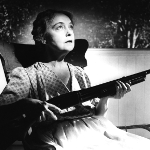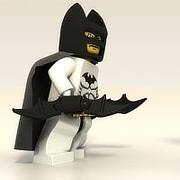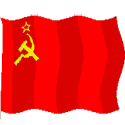|
Can somebody tell me about uniforms of the German Navy in World War One? Especially, how Zeppelin crews dressed. Also, looking for advice/education on the differences between uniforms. Everything I learn will have to be explained to someone who's only point of entry for milstuff is Star Trek, so while they might be familiar with the concept of dress uniform, I had to explain the distinction of officer vs. enlisted to him.
|
|
|
|

|
| # ? Jun 3, 2024 14:28 |
|
Nenonen posted:Question: what would be the longest periods of service for military issue equipment that you can think of? Ships, uniforms, weapons, what not. Just out of curiosity, was this inspired by the tweet that turned into this article? https://twitter.com/AthertonKD/status/1412929249497989122 https://athertonkd.substack.com/p/the-deuce-the-buff-the-constitution
|
|
|
|
ulmont posted:Just out of curiosity, was this inspired by the tweet that turned into this article? Nah, I don't even use Twitter. Thanks for that link! But actually I was first thinking about how some military aircraft have had seemingly long service spans, and then some have been less succesful. Granted, usually those with long lifespans have gone through several major upgrades through the decades. And we shouldn't count the Bf-109's still in active use by the Elbonian airforce and equivalents, probably. Then thoughts wandered to ships in the age of sails - how long did a brand new class of ships-of-line remain fresh in, say, the 16th century? Did armament get upgrades or something like that in the course? Thank you for watching this Making of a Post documentary 
|
|
|
|
Nenonen posted:Then thoughts wandered to ships in the age of sails - how long did a brand new class of ships-of-line remain fresh in, say, the 16th century? Did armament get upgrades or something like that in the course? HMS Victory was in military service from 1765 right up until the 1920s, though obviously its not like the RN took her along to Jutland. She was in front line service for 50 years or so, though. feedmegin fucked around with this message at 03:06 on Jul 27, 2021 |
|
|
|
ulmont posted:Just out of curiosity, was this inspired by the tweet that turned into this article? But that got me thinking about an only semi-related question: what's the largest anachronistic displacement of military gear in the popular imagination? I'm thinking about imagining a 6th Century Saxon King Arthur dressed up like he's Henry V at Agincourt in 1415 and that kind of thing. Torsion-powered bucket onagers as (late) medieval siege weapons has to be a contender. In the abstract, WWI-style trench warfare seems to creep its way backward into depictions of medieval warfare as well.
|
|
|
|
SubG posted:But that got me thinking about an only semi-related question: what's the largest anachronistic displacement of military gear in the popular imagination? I suppose citing A Connecticut Yankee in King Arthur's Court would be cheating a bit.  Although on the other hand, I'm pretty sure that book has a good deal of anachronistic or ahistorical elements due to Twain's own misunderstandings and the fact that he was writing for humor and satire more than historical accuracy.
|
|
|
|
Wingnut Ninja posted:I suppose citing A Connecticut Yankee in King Arthur's Court would be cheating a bit. But really I was just sorta thinking about how we tend to be very sensitive to differences between different technologies of recent vintage, while at the same time tending to minimise the importance of differences between historical technologies--all spears are a single thing, but the AK-47 isn't an AKM and an AKM isn't an AK-74 (and good lord none of them are a StG 44). And that got me thinking about the the endless confusion caused by the fact that medieval writers did not, as a general rule, give a single solitary gently caress about distinguishing between different kinds of siege engine.
|
|
|
|
If you are well informed about, say, historical horse straps and saddles, then presumably every movie scene with Roman or medieval horses will be hard to watch as those are the least likely of details to be got right even for safety reasons. Note: I don't know anything about horses! Also if you care about horses, a lot of old movies with them will be hard to watch...
|
|
|
|
So wait I'm reading https://www.amazon.com/Anarchy-Relentless-Rise-India-Company/dp/1408864371 and I'm wondering about the Persian and Afghan Swivel guns, what did they look like, how were they made and when did they start and stop using them. Also I wondering if there was a good history of the Durrani empire and of Nadar Shahs campaigns. 
|
|
|
|
Any questions for the survivors of the 485th bomb group? My mom does stuff with them every year. My great uncle flew with them in the 40’s and was only alive because of sick days at the right time. He was a B24 co pilot and super chill with my brother and I when we asked about him bombing nazi’s. Ugly In The Morning fucked around with this message at 09:35 on Jul 27, 2021 |
|
|
|
Ugly In The Morning posted:Any questions for the survivors of the 485th bomb group? My mom does stuff with them every year. My great uncle flew with them in the 40’s and was only alive because of sick days at the right time. Did he have a lucky charm/talisman and, if so, what was it? Did he have any superstitions/habits he did to ensure a safe flight? Same goes to the rest of the group.
|
|
|
|
Jobbo_Fett posted:Did he have a lucky charm/talisman and, if so, what was it? So he will deny the lucky charm/talisman thing but I know that one too well from trips when I was a kid:He had a constellation model airplane in his sunroom and he spent like two decades shooting geese with an air pistol in North Carolina. Uncle Tom was his brother in law that often didn’t talk directly about his WWII experiences as a B24 copilot. He did bomb Germany on Hitlers Birthday though. He was incredibly smart and I miss him all the time.
|
|
|
|
Ugly In The Morning posted:So he will deny the lucky charm/talisman thing but I know that one too well from trips when I was a kid:He had a constellation model airplane in his sunroom and he spent like two decades shooting geese with an air pistol in North Carolina. Aunt Babe was the racist one- she had some severe brain tumors and Uncle Tom Was with her to the end but it was… bad. My mom, brother and I used to go there to hang with Uncle Tom and play cribbage. They both had a… rough end.
|
|
|
|
drat, I'm sorry to hear that. My great grandfather was a B24 nose gunner out hunting subs at the end of the war. Never talked about his service. Got sick one day and was swept up by Florida's private health care system and didn't make it out alive. gently caress Florida
|
|
|
|
Jobbo_Fett posted:drat, I'm sorry to hear that. My great grandfather was a B24 nose gunner out hunting subs at the end of the war. Never talked about his service. Got sick one day and was swept up by Florida's private health care system and didn't make it out alive. Uncle Tom never let us know either. Just got way too into Solitare once and always was on point on giving my brother and I root beer. He was a funny as hell guy and never realized how much of his sense of humor was just straight up pain.
|
|
|
|
Lawman 0 posted:So wait I'm reading https://www.amazon.com/Anarchy-Relentless-Rise-India-Company/dp/1408864371 and I'm wondering about the Persian and Afghan Swivel guns, what did they look like, how were they made and when did they start and stop using them.  Here's some pictures. You're especially looking for the Zamburak camel-mounted swivel guns if you're looking at that used by The Durrani Afghans and Nader Shah's armies. It seems like the design can vary a bit from essentially a miniature cannon mounted on the saddle to more of a long, heavy musket design. Their heyday was in the 18th century and seem to have been regarded as outmoded in the 19th century when they were still in use in Central Asia, India and Iran.
|
|
|
|
What’s the fish hand thing for?
|
|
|
|
Scratch Monkey posted:What’s the fish hand thing for? High-fiving every time you survive firing the gun
|
|
|
|
Scratch Monkey posted:What’s the fish hand thing for? 
|
|
|
|
Looking for a good book about the creation and development of East Germany. Any recommendations?
|
|
|
|
Phanatic posted:Looking for a good book about the creation and development of East Germany. Any recommendations? Norman Naimark's The Russians in Germany: A History of the Soviet Zone of Occupation, 1945-1949 is going to be way up there. It ends at the creation of the DDR, but it's really the only book that drills down on the occupation era in a satisfying way and explains the interplay between the Soviets and the Germans who eventually stepped into leadership and administration rolls, the different sets of priorities that these groups had, and how they negotiated that. I'll rummage around my shelves and see if I can find a good single-volume that deals with the DDR's early years and how they progressed over the 50s, but I think most of the literature I have on that is focused on more niche areas. Naimark is pretty much required reading if you're interested in how the East German state came about, though.
|
|
|
|
Randarkman posted:
Neat so basically when they ambushed the Mughal calvary charge outside of Delhi there was zero chance their old style armor (scale?) would have protected them?
|
|
|
|
The other sense I get from this book is just that the Indians had alot of bad luck here and that they probably would have been able to eject the British if they had a couple more years of breathing space.
|
|
|
|
Lawman 0 posted:The other sense I get from this book is just that the Indians had alot of bad luck here and that they probably would have been able to eject the British if they had a couple more years of breathing space. Like most colonial endeavors, it helps to remember that the locals weren't a monolith and they had centuries of their own relationships and alliances and fighting. Pretty much any time you see a colonial venture that got a foothold it's because they managed to successfully form alliances with some of the natives and leveraged that to establish their own position.
|
|
|
|
In fact one of the early and decisive allies of the EIC in India were the Bengal banking houses (and later also the banking community of Gujarat), especially towards the latter half othe 18th century when the EIC began to flex its military muscle this was decisive in giving it an edge over both the French and local rulers, both of whom were fielding European-trained and drilled sepoy troops alongside Euroepan mercenaries, same as the company. But with the good credit the Company had with the Indian financial community, they didn't really have the same trouble alot of local rulers ended up having with their new expensive, permanent European-style infantry armies, in that they couldn't pay them very well, often not at all for when they ran out of funds they found it much harder and slower to secure loans than the EIC did.Lawman 0 posted:Neat so basically when they ambushed the Mughal calvary charge outside of Delhi there was zero chance their old style armor (scale?) would have protected them? Probably not, and they would have been mostly riding unarmored horses in any case. Mughal cavalrymen, when they were armored, wore a sort of mail and plate armor IIRC, not too much unlike you'd have seen on some Ottoman cavalry in the 16th century or thereabouts.  
Randarkman fucked around with this message at 19:32 on Jul 27, 2021 |
|
|
|
How much does barding gently caress up a horse? I imagine it takes years to train them to take it, but looking at the caparison in that pic, it obviously would've been banging against its forelegs constantly. How much does a kit like that weigh?
|
|
|
|
zoux posted:How much does barding gently caress up a horse? I imagine it takes years to train them to take it, but looking at the caparison in that pic, it obviously would've been banging against its forelegs constantly. How much does a kit like that weigh? I don't know. But training a warhorse takes years anyway already, and horses are strong. I imagine the barding itself doesn't weigh more than the armored man already does. One thing to consider though is that historically heavy cavalry didn't really gallop around full-speed like you see in movies and vidoe games, it was more like trot sped up to a fast trot for a charge, especially if holding formation was important.
|
|
|
|
Bumpin' disTias posted:Designing a living history thing about battlefield medicine ca. 700-900 AD. Any idea where I could look for sources?
|
|
|
|
Randarkman posted:In fact one of the early and decisive allies of the EIC in India were the Bengal banking houses (and later also the banking community of Gujarat), especially towards the latter half othe 18th century when the EIC began to flex its military muscle this was decisive in giving it an edge over both the French and local rulers, both of whom were fielding European-trained and drilled sepoy troops alongside Euroepan mercenaries, same as the company. But with the good credit the Company had with the Indian financial community, they didn't really have the samei trouble alot of local rulers ended up having with their new expensive, permanent European-style infantry armies, in that they couldn't pay them very well, often not at all for when they ran out of funds they found it much harder and slower to secure loans than the EIC did. Right probably one of the things that strikes me the most in this book is the amount of details given about gifts/tribute and how the break down/changes in these networks led to the Indian states and the local Europeans going nearly or totally broke. The total poverty of Shah Alam for example makes his recovery of Dehli and the surroundings frankly miraculous. Also hard agree with how important the Bengal Jain banking houses were to the Indian East India company success, they wouldn't have gone anywhere without those loans.
|
|
|
|
Cross posting from the grog games thread—I forgot this thread existed, sorry guys… Does anyone have any suggestions on books one might read on infantry tactics from 1865 to 1914? I’m curious as gently caress about the evolution of infantry tactics from the end of the American Civil War through the beginning of the First World War; and none of the books I read on individual wars give good detail on the subject. Like really, I want to know when exactly the close order mass fire line infantry ceased to be a thing that was used. I know plenty about the evolution of tactics during the American Civil War, but everything I read about following wars just paints with really vague brushes (or so it seems to me) until you get to trench warfare.
|
|
|
|
Randarkman posted:In fact one of the early and decisive allies of the EIC in India were the Bengal banking houses (and later also the banking community of Gujarat), especially towards the latter half othe 18th century when the EIC began to flex its military muscle this was decisive in giving it an edge over both the French and local rulers, both of whom were fielding European-trained and drilled sepoy troops alongside Euroepan mercenaries, same as the company. But with the good credit the Company had with the Indian financial community, they didn't really have the same trouble alot of local rulers ended up having with their new expensive, permanent European-style infantry armies, in that they couldn't pay them very well, often not at all for when they ran out of funds they found it much harder and slower to secure loans than the EIC did. In addition to this, Afghan military threats forced potential rivals of the British into northern campaigns which further strained their finances.
|
|
|
|
ZombieLenin posted:Cross posting from the grog games thread—I forgot this thread existed, sorry guys… Because if you really want to do a deep dive you can find all of The Official Records of the Union and Confederate Armies in the War of the Rebellion online/electronically (saving you having to find several inconveniently large bookcases to hold a print version) and that will give you a very granular view of the tactical decision making. You can also read stuff like Jomini (whose writings on Napoleon's campaigns greatly informed the American Civil War's officers' training) and manuals of contemporary drill (e.g. the various editions of Hardee's Infantry Tactics), although that will tell you more about what commanders in the field were expecting, not necessarily what they found.
|
|
|
|
Cyrano4747 posted:Naimark is pretty much required reading if you're interested in how the East German state came about, though. That sounds perfect, thanks.
|
|
|
|
SubG posted:Are you interested in diving into primary sources, or do you just want a modern overview? Primary sources are my jam. In fact, I wrote a Political Theory dissertation on the social character of memory, and divergent memories of the American Civil War (memories that started to diverge almost as soon as Sumter was fired on). I have also been an American Civil War amateur grognard most of my life So, while I would by no means call myself an expert, I am very familiar with the evolution of tactics during the American Civil War itself. Where there is a huge black hole in my brain is what happened to infantry tactics after the American Civil War ended up through August of 1914. I cannot even really get—at least the books I am reading anyway—a good picture of what the opening phases of the First World War actually looked like for infantry during the ‘mobile’ phase of the First World War; let alone a real description of the character of the fighting during the Franco-Prussian War or the Spanish American War. Does that make sense?
|
|
|
|
ZombieLenin posted:Where there is a huge black hole in my brain is what happened to infantry tactics after the American Civil War ended up through August of 1914. How are you on the Franco-Prussian War and the Russo-Japanese War? Those are basically the transitional fossils between mid-19th Century tactics, operational art, strategy, and logistics and WWI. In terms of primary sources, immediately prior to the outbreak of the Franco-Prussian War the French issued Règlement du 16 Mars 1869 sur les manoeuvres de l'infanterie, a new manual of infantry drill and tactics. This was the product of a committee created by Napoleon III to evaluate the viability of existing French infantry doctrine in light of new military technologies (like breech-loading rifles). I don't know what documentary evidence exists to ascribe motivations to this, but it seems reasonable to believe it had something to do with France noticing the complete drubbing Austria received at the hands of Prussia (and her allies) in 1866. Prussia clearly also learned lessons from the brief Austro-Prussian War, but I don't know of any good primary sources on the tactical and operational thinking that came out of it. Not saying they don't exist--I just don't know of any. At any rate, it's clear that they developed a lot of the doctrine that would subsequently inform the prosecution of the First World War: division of armies into smaller units expected to maneuver on their own initiative to accomplish broad tactical goals (the late 19th Century seeds of what we'd now call schwerpunkt), reliance of modern artillery to provide support for advancing infantry, use of e.g. rail to speed up internal lines, and so on. Several of these things were already factors in the American Civil War, but this is the first time the European armies that were later to be involved in WWI had to come to terms with them, and their experiences absolutely informed the development of WWI. And the other easily-identifiable antecedent that shaped thinking in early WWI was the Russo-Japanese War. If there's an arc describing the transition between pre-industrial warfare that starts just before (or perhaps in the middle of) the American Civil War, the Russo-Japanese War is the far end of the arc, where the effects of industrialisation on the battlefield are now beginning to be full apparent. Unfortunately I don't know of any good primary sources here, either. It's interesting that there don't seem to be many references that deal with precisely the subject you're asking about. Like if you read anything about the Franco-Prussian War, it'll touch on the ideas I've sketched out above, and most discussions of the First World War mention the influence of the Franco-Prussian and Russo-Japanese Wars. And discussions of the consequences of the American Civil War always dwell on it being an inflection point in warfare. But I don't think I've ever seen a work that treats it as the main subject.
|
|
|
|
Not sure if someone here recommended, but I am nearing the end of "The Deserters" by Charles Glass. I'm thoroughly enjoying the book- he does an excellent job of explaining the general character of each man, and the circumstance. Turns out, being in combat every day for extended periods is a bad thing.
|
|
|
|
Cyrano4747 posted:hey tank nerds, stole this from the OSHA thread. Ensign Expendable posted:Those rubber treads suggest construction vehicle to me. Looks like he released some kind of drainage plug in a reservoir under pressure, but I can't imagine what it could have been. Looks like the fender is covered in splatters of a similar colour, too. AFAIK hydraulic reservoirs are generally not under pressure and would probably hold a bunch more fluid than that on a vehicle of that size. I'd guess it's the contents of a hydraulic hose or line. Judging by the colour possibly contaminated with water or frothed up full of air bubbles, maybe as it was released.
|
|
|
|
Worst horse related detail from every drat movie is that roads have grass in the middle because they are faked, modern roads made for the movie. Horse carriages drawn by a single horse, the most common consist, will wear the grass out in the middle, and not just wheel tracks. Once you think about, it can never be unseen.
|
|
|
|
SubG posted:But that got me thinking about an only semi-related question: what's the largest anachronistic displacement of military gear in the popular imagination? I'm thinking about imagining a 6th Century Saxon King Arthur dressed up like he's Henry V at Agincourt in 1415 and that kind of thing. Shields turning up way later than they should have and guns not showing up as early as they did seems to be common. Re. trench warfare certainly by the early modern period you had extremely extensive trenches used in siege warfare - my understanding is that this was also a thing earlier but to a lesser extent. Definitely true if you're talking about field battles though.
|
|
|
|

|
| # ? Jun 3, 2024 14:28 |
|
MikeCrotch posted:Re. trench warfare certainly by the early modern period you had extremely extensive trenches used in siege warfare - my understanding is that this was also a thing earlier but to a lesser extent. Not in quite the same way, and not necessarily literally trenches, because the job they're doing is different (you are not being bombarded with a ton of long range heavy artillery firing explosive shells in a 17th century siege, and machineguns are also a bit thin on the ground) - above-ground earthworks also work. It's more about protecting your own cannon as you get them up nice and close to the siege target.
|
|
|




























